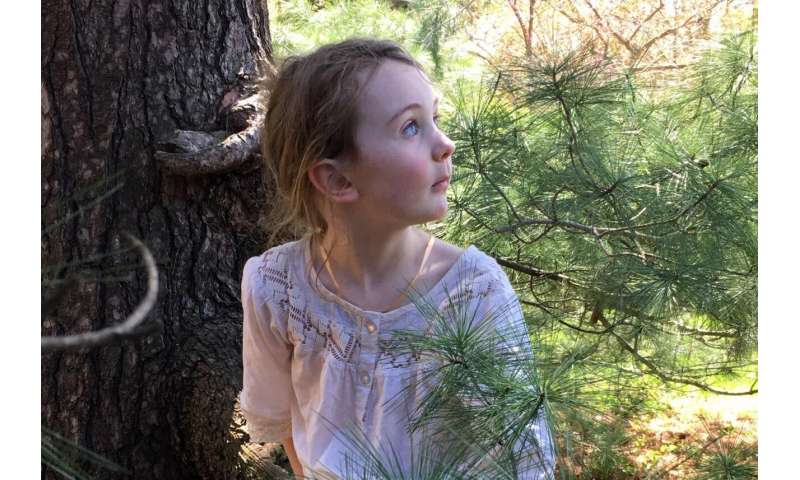New e-book highlights profound, diverse effects of nature on learning

Children are losing their connection to nature.
It’s more than an unfortunate abstraction. Scientists say our increasingly indoor lifestyle negatively affects our health and well-being, not to mention our drive to protect the natural world. And it may be hampering kids’ ability to learn and thrive. A new e-book, published by Frontiers in Psychology, examines the many ways putting children back in contact with nature could make them more successful in school and in life.
“We think of bits of nature—flowers, gardens, having views of trees—as nice, as ‘dessert,’ but don’t recognize them as being functional. But the research is telling us nature is not dessert. It’s necessary. This is one of those rare times where we like something and it’s good for us,” says Ming Kuo, director of the Landscape and Human Health Lab in the Department of Natural Resources and Environmental Sciences at the University of Illinois. Kuo is a co-editor and contributing author for the book.
The free e-book, “The natural world as a resource for learning and development: From schoolyards to wilderness,” contains 13 articles from scholars around the world. Kuo says the wide diversity of articles strengthens the case for nature’s importance to children.
“The cumulative impact of all these articles together says, look, not only do we consistently find that being around nature boosts children’s learning and healthy development, but we find it in studies asking different questions, using different tools, looking at very different groups of children,” she adds.
The articles dive deep into the effects of nature exposure on behavior and academic performance for children, from preschoolers attending immersive year-round nature programs to elementary students in urban, high-poverty schools. Other articles are more academic, posing future research questions for scientists in the field and developing a common language for describing ways children interact with nature.
Catherine Jordan, pediatric neuropsychologist at the University of Minnesota and co-editor of the book, says, “Through this type of research, we have the opportunity to make real impact in the world by answering game-changing questions such as, ‘Can nature reduce educational opportunity gaps and achievement gaps between children from different economic backgrounds?'”
Several of the articles would suggest the answer is yes. For example, one of Kuo’s articles in the book finds that academic performance in high-poverty Chicago schools increases in relation to schoolyard greenness. Another article, led by Rachel Szczytko of North Carolina State University, shows that outdoor learning can improve attention span and decrease disruptive behaviors in children with emotional, cognitive, and behavioral disabilities. Even teachers are impacted; another of the articles shows they become more creative, leaving more room for inquiry-based learning when teaching outside the classroom.
To the book’s co-editors, the relationship between nature and learning is clear.
“As a mom who knows the scientific evidence on children and nature, I feel ethically bound to let other parents know nature really is important for kids—at least as important as after-school enrichment classes,” Kuo says. “And every bit counts—walking through a green, leafy neighborhood, having a green view while doing classwork or homework, daydreaming up in a tree—they all make a difference.”
The e-book, “The natural world as a resource for learning and development: From schoolyards to wilderness” is published by Frontiers in Psychology and is co-edited by Ming Kuo and Catherine Jordan. A short introduction to the book is available here.
Source: Read Full Article
